 Music
Music  Music
Music  History
History 10 Less Than Jolly Events That Occurred on December 25
 Weird Stuff
Weird Stuff 10 Funny Ways That Researchers Overthink Christmas
 Politics
Politics 10 Political Scandals That Sent Crowds Into the Streets
 Weird Stuff
Weird Stuff Ten Bizarre Facts About The Doge Meme
 Our World
Our World 10 Ways Your Christmas Tree Is More Lit Than You Think
 Movies and TV
Movies and TV The 10 Coolest Stars to Set Sail on The Love Boat
 History
History 10 Things You Didn’t Know About the American National Anthem
 Technology
Technology Top 10 Everyday Tech Buzzwords That Hide a Darker Past
 Humans
Humans 10 Everyday Human Behaviors That Are Actually Survival Instincts
 Music
Music 10 Surprising Origin Stories of Your Favorite Holiday Songs
 History
History 10 Less Than Jolly Events That Occurred on December 25
 Weird Stuff
Weird Stuff 10 Funny Ways That Researchers Overthink Christmas
Who's Behind Listverse?

Jamie Frater
Head Editor
Jamie founded Listverse due to an insatiable desire to share fascinating, obscure, and bizarre facts. He has been a guest speaker on numerous national radio and television stations and is a five time published author.
More About Us Politics
Politics 10 Political Scandals That Sent Crowds Into the Streets
 Weird Stuff
Weird Stuff Ten Bizarre Facts About The Doge Meme
 Our World
Our World 10 Ways Your Christmas Tree Is More Lit Than You Think
 Movies and TV
Movies and TV The 10 Coolest Stars to Set Sail on The Love Boat
 History
History 10 Things You Didn’t Know About the American National Anthem
 Technology
Technology Top 10 Everyday Tech Buzzwords That Hide a Darker Past
 Humans
Humans 10 Everyday Human Behaviors That Are Actually Survival Instincts
10 Incredible Subcultures From Around The World
It’s really interesting to see how our societies have changed and been molded by historical events and cultural phenomena. However, what’s really fascinating are the subcultures that defy the mainstream in the hopes of creating their own little sense of identity and culture. How they create this identity is entirely up to them, but whether they do so via weird fashion statements, bizarre cars, odd crafts and hobbies, or simply by opposing the law, you can’t deny the fact that traits like this are what essentially make us human after all.
10 Tokyo Rockabillies

Ever wonder why certain subcultures from the past seem to have simply dropped off the face of the planet? Take the rebellious and iconic rockabillies and the Greasers of the ’50s, for example. They certainly aren’t mainstream anymore. So where are they now? Well, some subcultures experience some kind of a revival from time to time, and you’d be pleased to know that the rockabilly subculture is still alive and well—in Japan.
In fact, one of the biggest rockabilly scenes today is located in Yoyogi Park, and this is where the Tokyo Rockabillies hang out. Think leather biker jackets, slick gravity-defying quiffs and pompadours, and, of course, rock-and-roll music. Accompanying these leather-clad rebels are the modern equivalent to Grease’s pink ladies, sporting patterned dresses and pin-rolled jeans a la the 1950s. Who said that rock and roll was dead?
9 Mexican Pointed Shoes
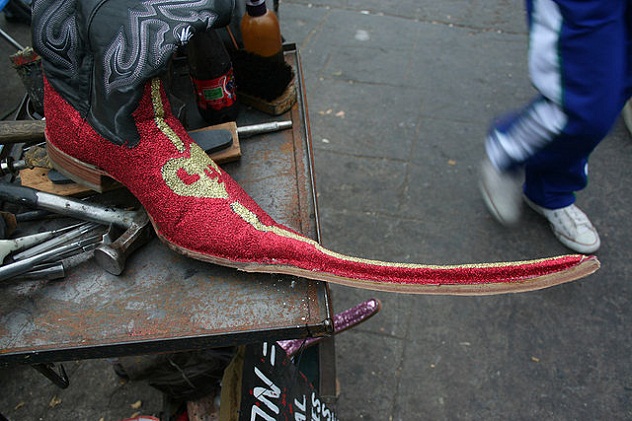
Ever felt the sudden urge to look like a jester from medieval times? Just in case you do, you’d better head down to the Mexican city of Matehuala. Here, the odd fashion trend of wearing long, pointed shoes has emerged alongside the popularity of tribal music. The reason behind this subculture’s existence and widespread popularity is the music itself, which is a unique blend of pre-Hispanic and African sounds with Cumbia basslines. Initially, people would show up to the dance floors in regular pointed shoes, but as time went on, nearby towns and villages competed with each other to see who could come up with the pointiest shoe of them all.
People would modify their own boots, and as time went on the shoes became pointier and pointier until it spiraled completely out of control. Apparently, there are folks walking around in shoes which are 1.5 meters (5 ft) long. Nowadays, dance crews have popped up all over the region, each with their own customized pointed shoes and dances. All in all, this isn’t the first subculture to be born out of the influences of music, but one thing’s for sure—it certainly won’t be the last.
8 Gyaru
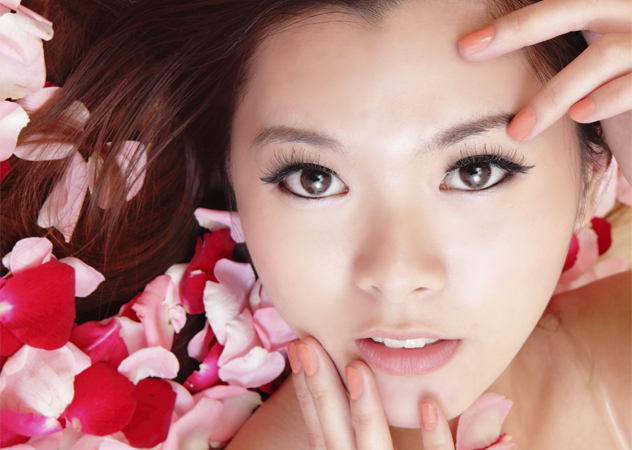
There’s no denying the fact that the phenomenon of globalization has changed the values and norms of many cultures all over the world. Although this certainly has its advantages, sadly, this is also resulting in a loss of cultural diversity and identity. Take a look at Japan, for example. Here, there exists a subculture of girls and young women who—much like the rest of the world—are obsessed with trying to achieve the unattainable levels of beauty imposed upon them by the media.
So if women all around the world do this, what makes these girls so special? Also known as Gyaru (a Japanese translation of “gal”), this subculture of women have gone to extreme lengths to achieve their image of “ideal beauty.” Gyaru have to follow a certain style of fashion, hairstyles, and makeup, but some features are almost always constant, such as big eyes, short skirts, and huge heels.
Also, just like other subcultures, Gyaru can be subdivided into a bunch of smaller subcultures. Perhaps the wildest of the lot were the Yamanba (a sub trend of Ganguro, meaning “black face”), who literally tanned their skin to a crisp, dyed their hair blonde, and wore large circles of white eyeshadow, all coupled with hair extensions and neon bright clothes. However, apparently the Jersey Shore look is out, as nowadays Gyaru tend to go for whiter skin, colored contact lenses, and a more feminine “schoolgirl” look. Whatever the latest trend, one thing’s for sure—the Japanese are no strangers to crazy.
7 Scraper Bikers
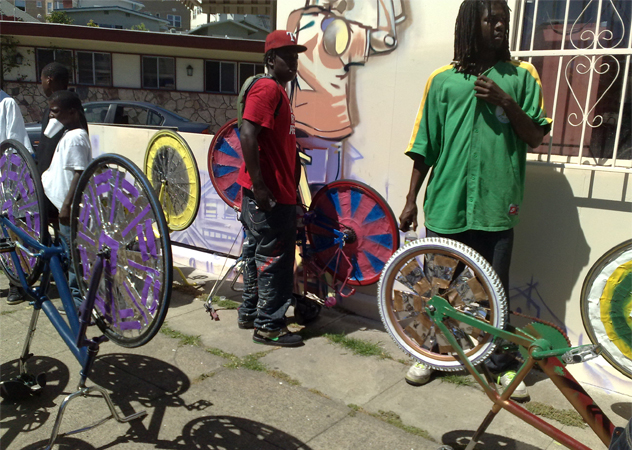
Subcultures often form around a particular area, but thanks to the Internet, these days they can literally spread like wildfire. This is exactly what happened to the Scraper Biker subculture, which received a lot of popularity after the video “Trunk Boiz” coined the term and went viral on YouTube.
Although some subcultures are obsessed about modifying cars and trucks, for these guys it’s all about modding and personalizing bicycles. Scraper Bikes originally come from the San Francisco Bay Area (Oakland, to be specific), and they’re usually spray painted with a good amount of aluminum foil thrown in for good measure. Basically, the idea is to try and replicate (on a low budget) the infamous “scraper cars,” which were modified American family cars outfitted with aftermarket rims.
Sure they may not be as grand—or as expensive—as their scraper car counterparts, but there’s no denying that they are just as attention-grabbing and colorful.
6 Elvis Presley Rebels
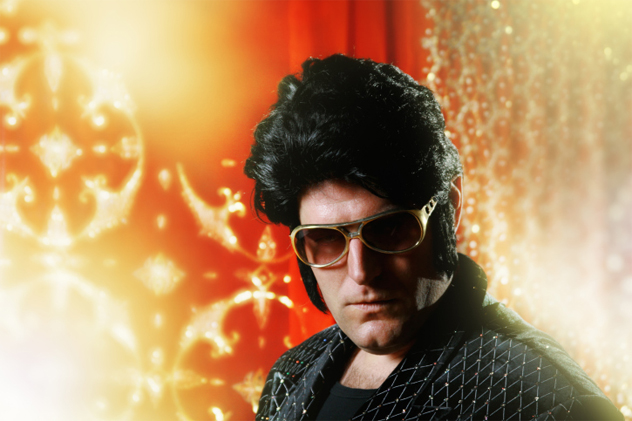
What usually comes to mind when one mentions Switzerland? Scrumptious chocolate, expensive watches, and army knifes? Perhaps a Swiss bank account? Well, how about a rebel youth subculture obsessed with the likes of James Dean, Marlon Brando, and Elvis Presley? Enter the Elvis Presley Rebels.
The ’50s are known for the birth of a new age group. No longer were there only kids and adults because the teenager culture had been born. While teens around the world were starting to rebel against the norms of society, the Elvis Presley Rebels took it a step further. These rebels were discovered in the late 1950s by a Zurich-based erotic photographer for gay magazines named Karlheinz Weinberger. Initially he only followed them around, but eventually he earned their trust and started to document their way of life. What he discovered was a rather unique blend of American rock and roll culture, spiced up with a bit of individualism. And we really do mean individualism; these denim-clad guys had outrageous jackets and jeans customized with screws, horseshoes, nails, giant Elvis belt buckles, and anything else that might have tickled their fancy.
What’s really interesting is that after viewing a few pictures of these rebels, their goal becomes increasingly obvious. This subculture wanted an identity of their own, as well to defy the traditional ideas imposed on them by their parents and the Swiss authorities. They showed this defiance by making one of the first fashion statements, which is a practice that is still going on to this very day.
5 Teddy Girls

The Teddy Boys (also known as Teds) were a rebel subculture that roamed the streets of 1950s Britain looking for trouble. They took a lot of influence from the Edwardian era as well as American rock and roll, as they sported tailored jackets, greasy quiffs, and crepe-soled shoes known as “creepers.” When they weren’t causing a ruckus, these gentleman-like Teds would then go to the cinema, attend dances and concerts, and collect magazines and vinyls. But did you know that the Teddy Boy subculture had a subculture of its own? Say hello to the Teddy Girls.
Only around a handful of photographs remain of the Teddy Girls, which were captured in 1955 by the freelance photographer Ken Russell (who would become a successful movie director later in life). At the time, the Teddy Boys seemed to get all the media coverage, so Russell only managed to publish his pictures in a small magazine. After that, his work would remain largely unseen for half a century, until the pictures were rediscovered in 2005. Thus, the Teddy Girls were rediscovered along with the pictures.
But who exactly were these Teddy Girls? To get a bit of perspective, you have to get an idea of their social situation. The second World War had just finished, and Europe was slowly starting to rebuild itself and re-establish normal life. Thus, just like their male counterparts, the Teddy Girls had to be tough because they had to endure the final years of rationing that lasted until 1954. These working class teens turned to fashion to make a statement, which shocked their parents’ generation.
Despite their dapper style, the Teds were immediately given a bad reputation by the media, who generalized that the Teds were involved in vandalism, racism, violence, rioting, and petty crimes all across Britain. Although the papers at the time were certainly exaggerating a bit (not all Teds went down the darker paths in life), maybe modern day society could learn a thing or two from the Teds. At least they dressed better than today’s teens.
4 Decotora

It’s no secret that the Japanese love their cars. From the drifter scene to modifying classic sports cars, Japanese have done it all. However, there is a group of Japanese enthusiasts that put all the other car modders to shame. Known as the Decotora (translation: trucks decorated with illuminations), these guys have literally turned their trucks into moving pieces of art, albeit with a dizzying amount of neon thrown in just for good measure.
Looking like a Transformer that just came out of a Las Vegas arcade, these pimped out rides are said to have first roamed the highways of Japan in the 1970s, back when the cult movie series Trucker was released. Although the origins of the Decotora are still shrouded in mystery, this subculture really took off in the last decade, when all sorts of aftermarket chrome and neon customizations were imported from the US.
So why did Japanese truckers start to decorate their trucks? Was it all made possible by the cult movie series? Frankly, no one is really sure. Some speculate that this subculture was born because truck drivers tend to get lonely on long trucking jobs, so they needed a hobby to pass the time while they were on the move. Nowadays, truckers try to out-bling each other, with each truck design becoming more ridiculous and monumental. However, as outlandish and illegal as these trucks may seem, there’s a catch. At the end of the day, these trucks have to be street legal and in running order, which is a whole other art in itself.
3 Sapeurs
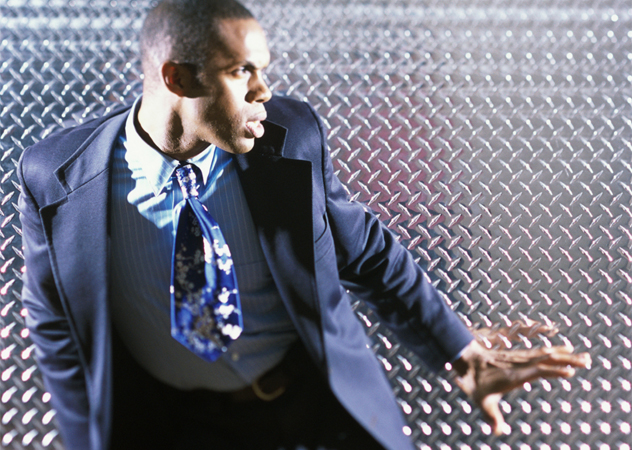
Pop quiz! Can you mention any fashion cities from around the world? Any of these would do: New York, Paris, London, Tokyo, Los Angeles . . . Kinshasa and Brazzaville. Wait, what? Yep, you read that right—the latter two cities happen to be situated smack dab in the middle of the Congo, and they are home to the world’s unlikeliest fashionista subculture.
Known as the Sapeurs, these fine gentlemen are among the dandiest and most well-dressed men on the planet. With crumbling, war-torn slums in one of the poorest countries on Earth as a backdrop, these men stroll around in designer double-breasted tailoring, tweed, silk hankies, and immaculate footwear, all while smoking on their pipes and cigars. What’s weird is that these men aren’t rich oil tycoons or even wealthy by any stretch of the imagination. They’re just regular people—shop owners, teachers, taxi drivers, mailmen—and they’re not simply following a fashion trend. It’s almost like a religion for them. But why do these working class Sapeurs choose to spend their hard-earned money on clothes instead of buying a car, a better house, or something more practical? The reason could be historical.
Records of these dandy men go back as far as the 18th century, back when slaves had to wear elegant uniforms to “fit in,” so they could better serve their masters. After the slave trade was abolished for good, the freed Africans would go on to create their own dandy style. Other theories state that the Sapeurs exist only in peacetime (remember that the Congo is very politically unstable), so they are a living sign of better things, such as stability and peace.
2 Elevator Enthusiasts

Elevators aren’t really a thing you put much thought into. After all, you just hop in, and after a few seconds you hop off again and go about your day.
Well, not for everyone. As it turns out, there’s a quirky little subculture dedicated entirely to the love of elevators. Known as Elevator Enthusiasts, these people ride elevators up and down and record their experiences so that they can be shared later on the Internet with fellow enthusiasts across the world. One could say that this subculture really took off thanks to media-sharing platforms such as YouTube, as there are now literally thousands of videos which have been uploaded to the site. But now for the burning question on everyone’s mind: What makes these enthusiasts so passionate about elevators? And why, of all things, elevators?
Apparently, these enthusiasts like to admire the little details of the machine: button placement, lighting, the doors, and the views. As for the latter question, it’s really subjective. Some people are obsessed with vintage cars, while others really like elevators. Although it might not be everyone’s cup of tea, you really have to admire these elevator-riding communities for doing what they enjoy and love.
1 Herero

Remember the Sapeurs from earlier? Well, the Herero are kind of like the female version of that. To put it simply, this Namibian tribe is basically the subculture that time forgot. Why? For starters, the women of this tribe choose to wear garments and dresses that date back to the style of the Victorians. The Herero women like to wear long, colorful dresses with multiple petticoats, as well as 19th century horn-shaped hats.
The practice was introduced by the wives of German colonialists who arrived in Namibia at the turn of the 20th century. They offered to work on the Herero lands, and in turn asked the Herero people to be properly dressed and covered up as the Germans saw fit. Initially all went well, but over time, the Herero people ended up being used as slaves; later, their land was confiscated and given away to German settlers. Eventually this escalated to the Herero-German war of 1904, which resulted in the surviving Herero people ending up in concentration camps and subjected to human experimentation.
Herero prisoners were worked to death, raped, and some were even injected with smallpox and tuberculosis. Knowing their dark history, it’s strange that the Herero still choose to wear clothes that remind them of the cruelties against their people. However, the optimistic Herero think differently. They see their Victorian clothing as a symbol of the overcoming of history, as they represent the struggles that their forefathers had taken under the German colonial rule.
Sure, some cultures may chose to wear certain clothes as a fashion statement, but what’s amazing is how much untold history and pride lies behind a particular way of dressing. Despite the fact that the Herero were close to being exterminated, their clothes are a testament to their tribe’s determination and, as a result, give them hope for the future.
I’ve been a long time reader of Listverse, and now I’ve decided to take the plunge and start writing my own lists. You can send your comments and suggestions to my email.








